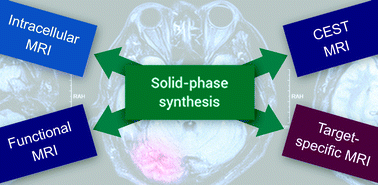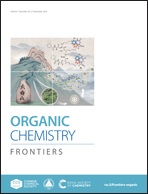Solid phase synthesis in the development of magnetic resonance imaging probes
Abstract
MRI has emerged as a very important tool in biomedical research and is an essential diagnostic method in clinical radiology today. Although it can be utilised as a standalone technique, the inherent low sensitivity of the method has led to the development of contrast agents (CAs) in order to improve the specificity of the measurement. Nevertheless, the preparation of such probes is often challenging using standard solution phase chemistry, resulting in limitations in CA diversity and ultimately their broader applications. Solid phase synthesis (SPS) has emerged as an alternative synthetic methodology that can assist in circumventing these issues to enable more complex and specific derivatives to be developed. This article aims to provide a concise overview of the strategies employed for MRI CAs developed using SPS synthetic methodologies and evaluate the outlook for the approach in future CA synthesis. Specifically, the development of ligands for T1-weighted imaging, chemical exchange saturation transfer and bioresponsive MRI CAs synthesised directly via SPS are discussed.

- This article is part of the themed collection: 2020 Organic Chemistry Frontiers Review-type Articles


 Please wait while we load your content...
Please wait while we load your content...